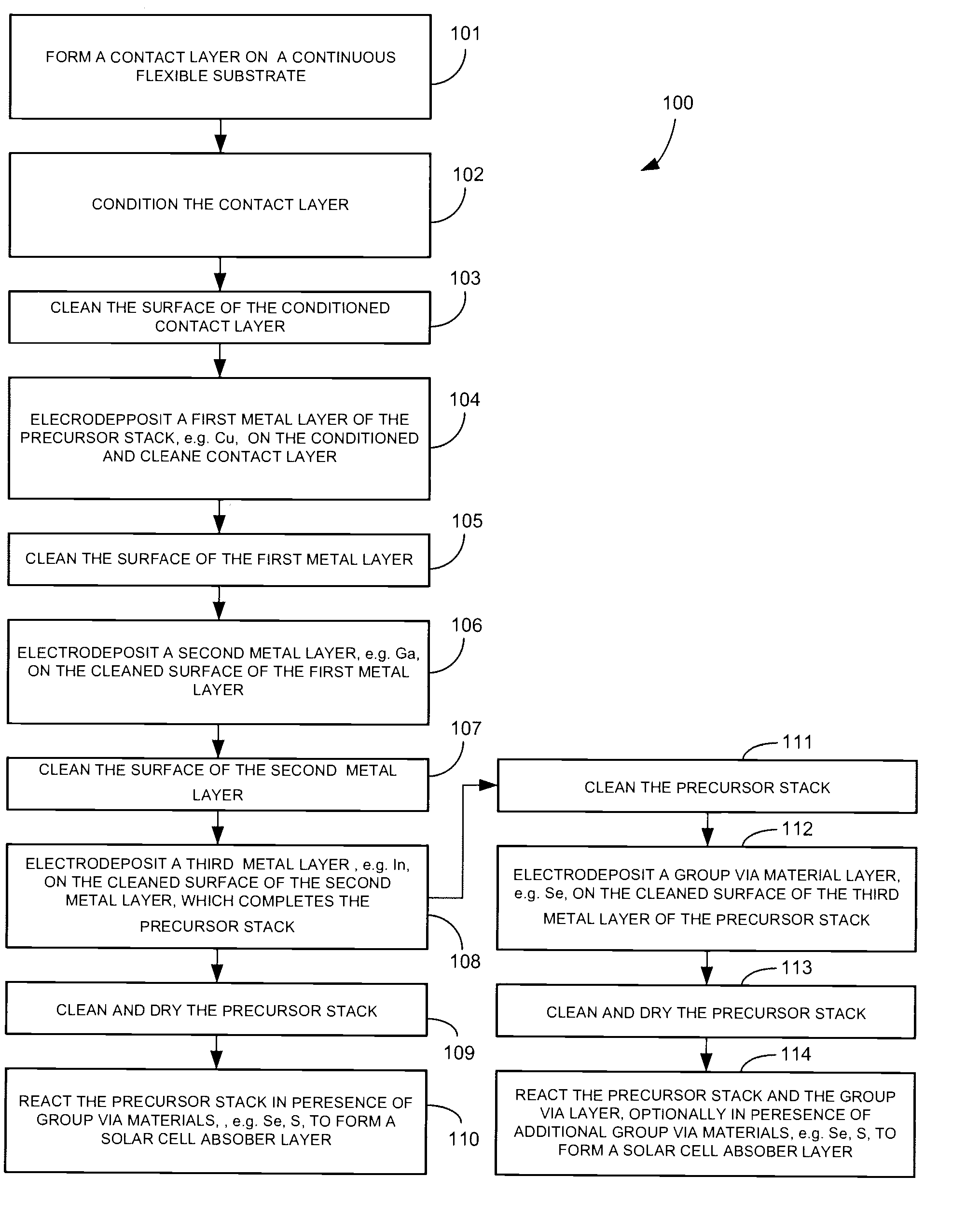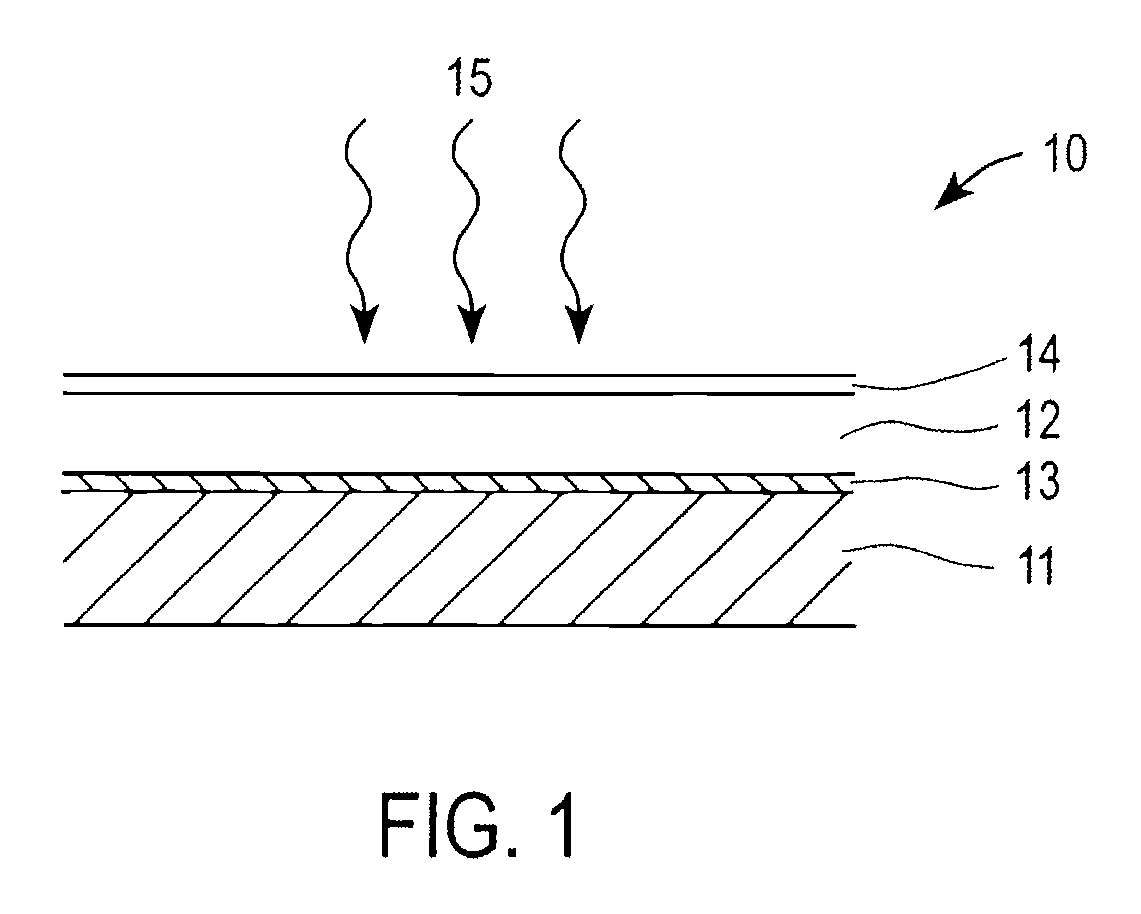Roll-To-Roll Electroplating for Photovoltaic Film Manufacturing
a photovoltaic film and electroplating technology, applied in the direction of electrolysis components, sustainable manufacturing/processing, final product manufacturing, etc., can solve the problems of high plating current density, non-uniformity, and problems of adhesion to the substrate, so as to reduce the effective series resistance of the device
- Summary
- Abstract
- Description
- Claims
- Application Information
AI Technical Summary
Benefits of technology
Problems solved by technology
Method used
Image
Examples
Embodiment Construction
[0023] Present invention provides a low-cost, high throughput two-stage process for fabrication of CIGS(S) type absorber layers for manufacturing of solar cells.
[0024]FIG. 2 schematically shows an embodiment of the process and the tool of the present invention. In this embodiment, a roll-to-roll processing technique is used to electrodeposit a Group IB material (preferably Cu) and a Group IIIA material (preferably at least one of In and Ga) in a continuous manner on a continuous flexible workpiece 22 such as a flexible foil base including a flexible substrate and a contact layer. The tool 19 has a supply spool 20 and a return spool 21 and the flexible foil base 22 is directed from the supply spool 20 to the return spool 21 through a series of electroplating units 23. The process units 23 may include at least one Group IB material electroplating unit, and at least one Group IIIA material electroplating unit. After each electroplating unit 23, there may preferably be cleaning units 2...
PUM
| Property | Measurement | Unit |
|---|---|---|
| molar ratio | aaaaa | aaaaa |
| molar ratio | aaaaa | aaaaa |
| molar ratios | aaaaa | aaaaa |
Abstract
Description
Claims
Application Information
 Login to View More
Login to View More - R&D
- Intellectual Property
- Life Sciences
- Materials
- Tech Scout
- Unparalleled Data Quality
- Higher Quality Content
- 60% Fewer Hallucinations
Browse by: Latest US Patents, China's latest patents, Technical Efficacy Thesaurus, Application Domain, Technology Topic, Popular Technical Reports.
© 2025 PatSnap. All rights reserved.Legal|Privacy policy|Modern Slavery Act Transparency Statement|Sitemap|About US| Contact US: help@patsnap.com



